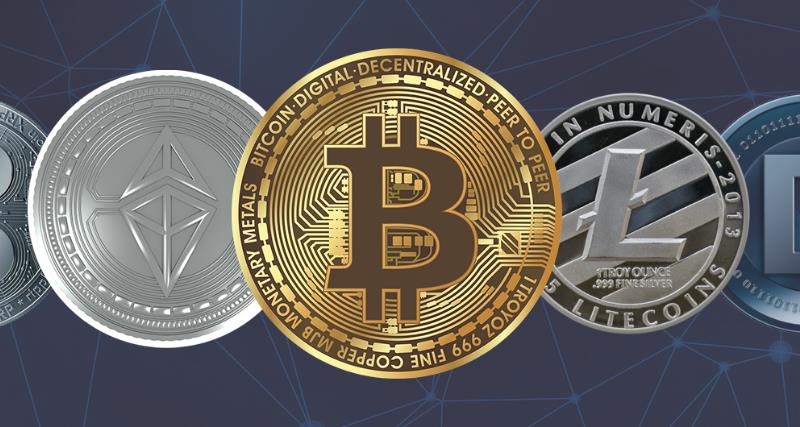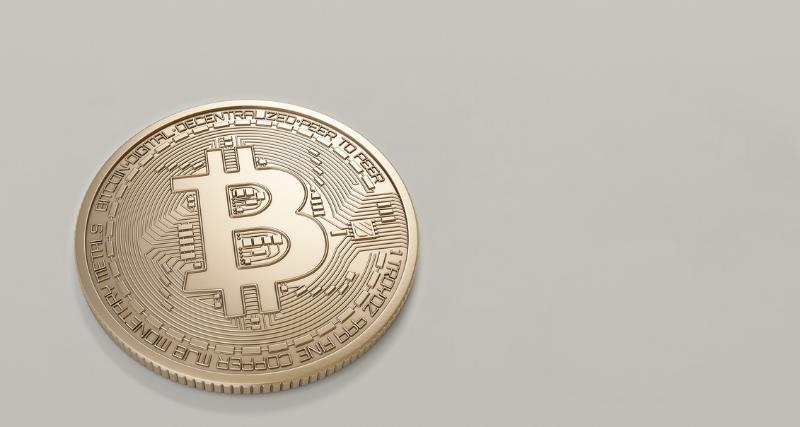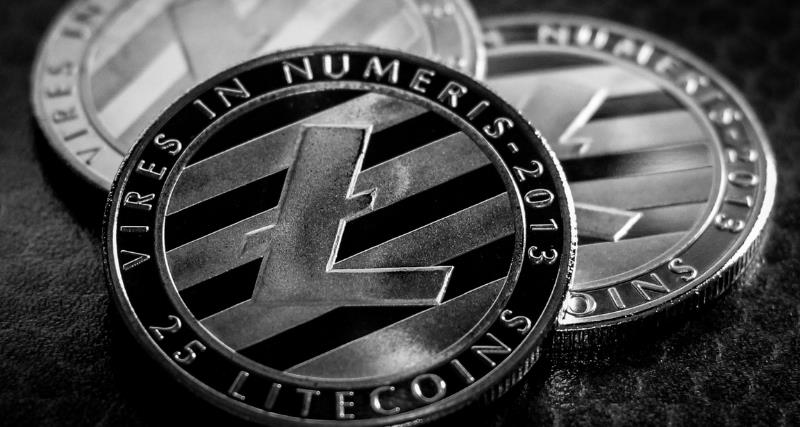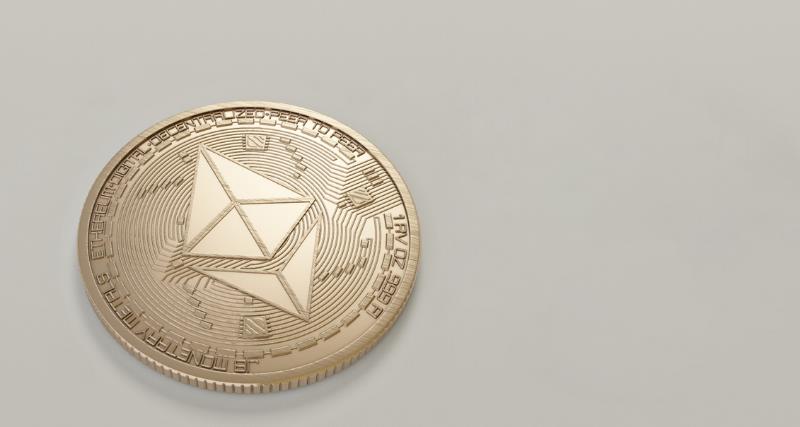Best Cryptocurrencies

Since the creation of Bitcoin, literally hundreds of digital currencies were created. But not alt coins are the same. Find out in this article which are the best performing cryptocurrencies, their advantages, and why investors love trading the 3 most popular digital currencies of all time.
- Cryptocurrencies are not subject to any regulatory body, thus, the trading of these assets is extremely volatile
- When trading cryptocurrencies, through a CFDs broker, there’s the high risk of losing money rapidly due to leverage and price volatility
- As of March 2021, there are over 5,000 Altcoins, with some destined to disappear, while some might go up in price
- The 3 best cryptocurrencies of all time are Bitcoin, Litecoin and Ether
Best Cryptocurrencies
Cryptocurrencies Risks and Disadvantages
Before we go over the question of which are the best performing cryptocurrencies, like any investment, there could be risks, and also possibilities. And this creates another question. Do we really know the risks and possibilities that digital currencies bring us?
First of all, we must clarify the options when trading with cryptocurrencies. Trading can be done directly of a cryptocurrency (Bitcoin, Litecoin, etc.) versus the price in relation to a fiat currency, like the US dollar or the Euro.
To trade an Altcoin versus a fiat currency there are two options. The most common option (considering the trading volumes) is via an exchange.
To trade via an exchange, the investor needs to hold the digital currencies on their account and access to a trading platform that allows for trading of cryptos versus fiat currencies.
Secondly, digital currencies can be traded with CFDs brokers. Trading through this option the investors would not own the currency, but the fiat currency as the underlying asset.
Contrarily to trading via an exchange, trading with a CFDs broker allows investors to trade on leverage and even to short trade, without owning the asset, and allowing to take advantage of any downtrend price movements in the market.
To trade cryptos through this option, investors need to find a broker offering cryptocurrencies CFDs trading. CFDs brokers have long spotted the potential interest from investors on the digital currencies markets. Contrarly to trading via an exchange, these assets incorporated on their list of trading instruments, allow investors to trade up or down with cryptocurrencies prices.
CFDs brokers offer trading of the most popular cryptocurrencies, such as Ripple, Litecoin, Dashcoin, Ethereum and of course, Bitcoin. But, like any other asset, trading on cryptocurrencies is not risk-free, being it via an exchange or a CFDs brokers.
The main risks of trading cryptocurrencies, and the cryptos themselves, are:
There is no regulatory body. This means, contrary to the FX market and fiat currencies trading, there is no entity recognized as a regulatory body overseeing market trading and protecting investors, and there isn’t a central bank that supports a digital currency, which can cause mistrust.
Cryptos are not mainstream. As a result of this mistrust, and the ignorance on the subject, not much of the population knows what are or how to use cryptocurrencies.
High volatility markets. In the cryptocurrencies market, the asymmetric information and rumours (commonly found on several social media channels like Twitter) can affect the price of cryptocurrencies, creating high volatility peaks or drops.
Large number of ICOs (Initial Coin Offering). Several new cryptocurrency offerings, in which a large amount of money is collected to fund the project fail, causing losses to investors, and mistrust on market.
Also, a lot of these ICOs are pump and dump schemes (market manipulation), where the developers creating a new digital coin retain control of the “minting”. If the coin gains popularity on the market, the developers will try to pump the price and then dump all their assets to make a huge profit.
Cryptocurrencies are banned in parts of the world. Several central banks have already spoken out about this market, some reporting its risks and others taking measures, such as the Central Bank of China banning ICOs, and even closing Bitcoin exchange platforms, or the CONSOB (regulatory body in Italy) banning the trading of crypto CFDs in late 2020.
Advantages of Cryptocurrencies
So, having now an idea of the risks and disadvantages of cryptocurrencies and the trading of these assets, we must now show its uses and huge advantages.
Cryptocurrencies are not controlled by any central bank. What, in turn is a disadvantage, is also an advantage for cryptos, since no institution can control the value of a cryptocurrency on the market.
This is a clear sign that its price fluctuates freely, where, in theory, the price is determined strictly between buyers and sellers, or the demand and supply rules, without any central bank’s interference.
Counterfeiting is almost impossible. This means that counterfeiting a crypto it’s not impossible, but it is a very complicated and expensive process, compared with counterfeiting traditional currencies, since a cryptocurrency network is managed by millions of people and any attempt does not go unnoticed, blocked with counter-measures as soon as spotted.
Cryptocurrencies don’t have geographical barriers. As long as it is possible to pay with the cryptocurrency, it can be done.
Savings on transaction costs. With cryptocurrencies there are no intermediaries of any kind. Payments can be made directly between parties, and the cost is only a network fee, resulting in a more cost-effective solution.
Enhanced security. The cryptographic system of the digital currencies and their network is far more secure than that of some banks, and the proof is the adoption by several banks and financial institutions of the Blockchain.
Credibility and speed. In addition to security, confirmed transactions cannot be modified or deleted from the network, which increases its credibility.
Crypto payments are also very quick. For example, a transfer between continents, with the traditional payment system would take days, while with cryptocurrencies the transaction can be done in minutes, or even seconds.
In conclusion, despite the mistrust that exists and the fact that some institutions have banned their use, the exponential growth that these assets had in recent years is absolutely extraordinary.
Which are the Most Popular Cryptocurrencies?
Bitcoin, The First True Digital Currency

Most of us, on hearing the word Bitcoin, automatically recall the exponential growth that this digital currency had, making millionaires in a matter of years, and being the main subject of crypto related news.
However, what exactly is Bitcoin, when and for what purpose was it born? For those who don't know about it yet, keep reading, we will try to explain the basics about this revolutionary crypto currency below.
Bitcoin is a cryptocurrency, a virtual currency, and at the same time a network by which it is sustained. A virtual currency is a currency that is governed by the internet, is abstract, and has no physical form. Just like any other common currency, with virtual currencies users can purchase goods and services with it, where accepted.
The birth of Bitcoin happened in 2009, thanks to Satoshi Nakamoto, a skilled computer programmer (or group of programmers), although the concept of a cryptocurrency was created much earlier, before the 21st century.
The concept of virtual currencies had already been studied in the 1980s. In 1998, Wei Dai, a computer scientist, introduced the B-money, a distributed electronic cash system, as a solution for the purchase of digital goods.
The year Bitcoin was born was not random. Many of us remember that 2008 was a difficult year for the global economy, which meant the start of monetary policies by the Fed, the US Central Bank, to slowly turn the economy to a more positive outlook.
Hence the initial pretence of the birth of Bitcoin. Its creators wanted a currency that was not under the control of any monetary authority, a currency that that no-one could control its value.
While that was the initial concept behind its creation, little time passed and soon after all the advantages of Bitcoin were acknowledge propelling this first digital currency to great popularity worldwide.
One of the most important advantages is that, being a virtual currency with no boundaries, users could make international transfers, pay for goods and services faster and with very low transaction costs. All it was needed was an electronic device, a PC or a Smartphone, and an internet connection.
Currently, Bitcoin is quoted at a much higher price than in its first years, and it is believed that it could still increase in price mainly because its supply is limited - there will only ever be a maximum of 21 million units in circulation.
In the last few days, the price has topped 55,000 USD. Everyone wants Bitcoin, some to use it as a currency, but the majority just wants to speculate on its price. Where will the Bitcoin price be in the next 5 years? No one knows, but according to some Bitcoin price predictions, the digital currency could reach 1,000,000 USD by 2037!
Litecoin, the Decentralized Cryptocurrency

Although Litecoin not being as popular as the Bitcoin, and the fact that attracts a much inferior price, this second most popular digital currency has followed a similar process in terms of listing value and exponential revaluations in recent years. So much so that, at the end of 2020, it reached a market capitalisation of 10 billion USD!
Litecoin is a cryptocurrency supported by a p2p (open source) network, the same system by which Bitcoin is supported, but with a different mining system, that it is not based on such a centralised system as Bitcoin.
The birth of Litecoin was on October the 5th, 2011, and its creator is Charlie Lee, a computer scientist, MIT graduate and a former Google employee. Lee created the Litecoin to cover the drawbacks of Bitcoin, such as the centralization of supply and the time of its transactions.
Although both digital currencies being similar, Lee did not intend for Litecoin to be a replacement of Bitcoin. The intention was actually for them to coexist together, as complementary to each other, so Lee created Litecoin with a different mining system.
Although both are run on an open-source platform, Litecoin's mining is based on the Scrypt algorithm and not the SHA-256 algorithm like Bitcoin. This means that there is no mining centralization. For this reason, Litecoin's growth has not been as strong as Bitcoin's, but thanks to its decentralization, it allows for more people to access its mining.
Bitcoin and Litecoin are also different from each other regarding the units in circulation. While Bitcoin is limited to 21 million units, the Litecoin has a limit of 84 million. Litecoin also needs less time to confirm transactions.
At least, when the cryptocurrency was created in 2011, Litecoin's transaction time was much shorter, around 2-3 minutes, compared with 10-15 minutes for Bitcoin.
Having recently traded above 200 USD per coin (for the second time since it’s creation), Litecoin does not fetch the attention and market buzz of the Bitcoin, but we can affirm and confirm that this digital currency has firmly established itself in the digital currency’s world and a deserved 2nd place in terms of popularity.
Ether and Ethereum, Which is Which?

Since Bitcoin's appearance, other digital currencies have also proliferated and also managed to capture the attention of the market, such as the Ether, also with a price that increased exponentially in the wake of the Bitcoin surge.
Ether is the native cryptocurrency of the Ethereum platform. Ether is the second largest cryptocurrency, after Bitcoin, with a market capitalization of 160 billion USD. The Ethereum platform is currently the most actively used blockchain.
Vitalik Buterin is the young Russian who founded Ethereum, a project that began in late 2014. Buterin, a brilliant student in computer science, won, in 2012, the bronze medal at the International Olympiad of Computer Science.
Although he managed to enter university, he abandoned his studies in 2014 due to the fact that he received a scholarship that allowed him to work full-time with Bitcoin, a training that revealed to be instrumental in the creation of his own coin the same year, the Ether.
In essence, the advantages of Ether, compared to traditional currencies, are very similar to any other cryptocurrency, like Bitcoin. On the other hand, there are also some differences between Bitcoin and the Ether coin, of which the most significant are:
- Unlike Bitcoin, capped at 21 million coins, there is no limit on Ethers.
- A fixed reward of 5 Ethers for mining, while in the case of Bitcoin mining output is halved for every 210,000 blocks.
- Transaction speeds of Ethers is much faster than Bitcoins, with the possibility of executing transactions in matters of seconds rather than minutes.
- Smart contracts integrated on the same Ethereum platform without the need for any external software.
The Ether coin, in early 2021, was trading at nearly 2,000 USD, a reflection of its popularity amongst cryptocurrencies enthusiasts. Being the most recent one, compared with Bitcoin and Litecoin, we consider it to be the 3rd most popular cryptocurrency in the digital currency’s world.
Conclusion
So, every bad story has a silver lining. The market turmoil created by the 2008 global economic crisis was the wake-up call to talented computer scientists to try and revolutionize, and reinvigorate, the way financial transactions were made.
And thanks to that same economic crisis, caused by greedy individuals and institutions, and affecting millions of persons worldwide, the need for something different, a decentralized currency, that couldn’t be manipulated by those same institutions, was met with a refreshing welcoming.
And again, thanks to that crisis, the surge in popularity for digital currencies raised to unthinkable levels. It’s impossible to accurately predict what will be the future of digital currencies.
On one side, central banks and regulators impose bans on them, or the trading of these assets. On the other side, institutional players are warming and raising interest on these instruments. Of course, if there’s money to be made, institutional players will always be interested, but their involvement on the digital currencies market (due to their long curriculum of economic disasters) can produce quite the opposite results.
Tell us what you think about this article and its contents, or which one is your favourite cryptocurrency, and why, on the comments box below.




